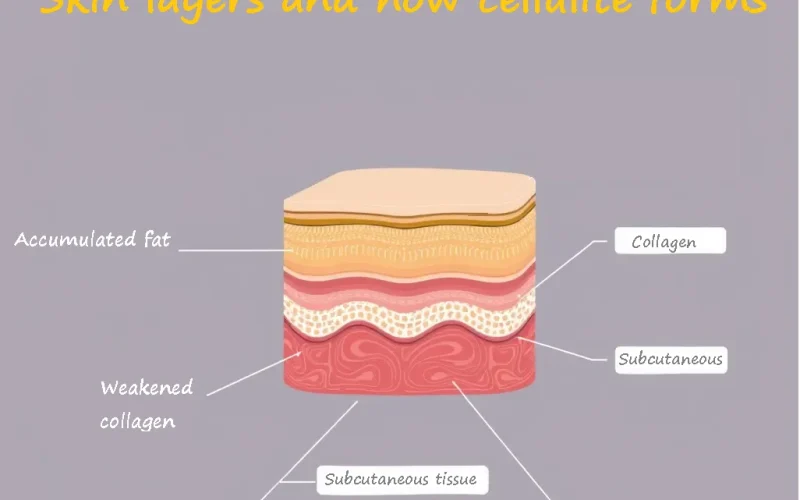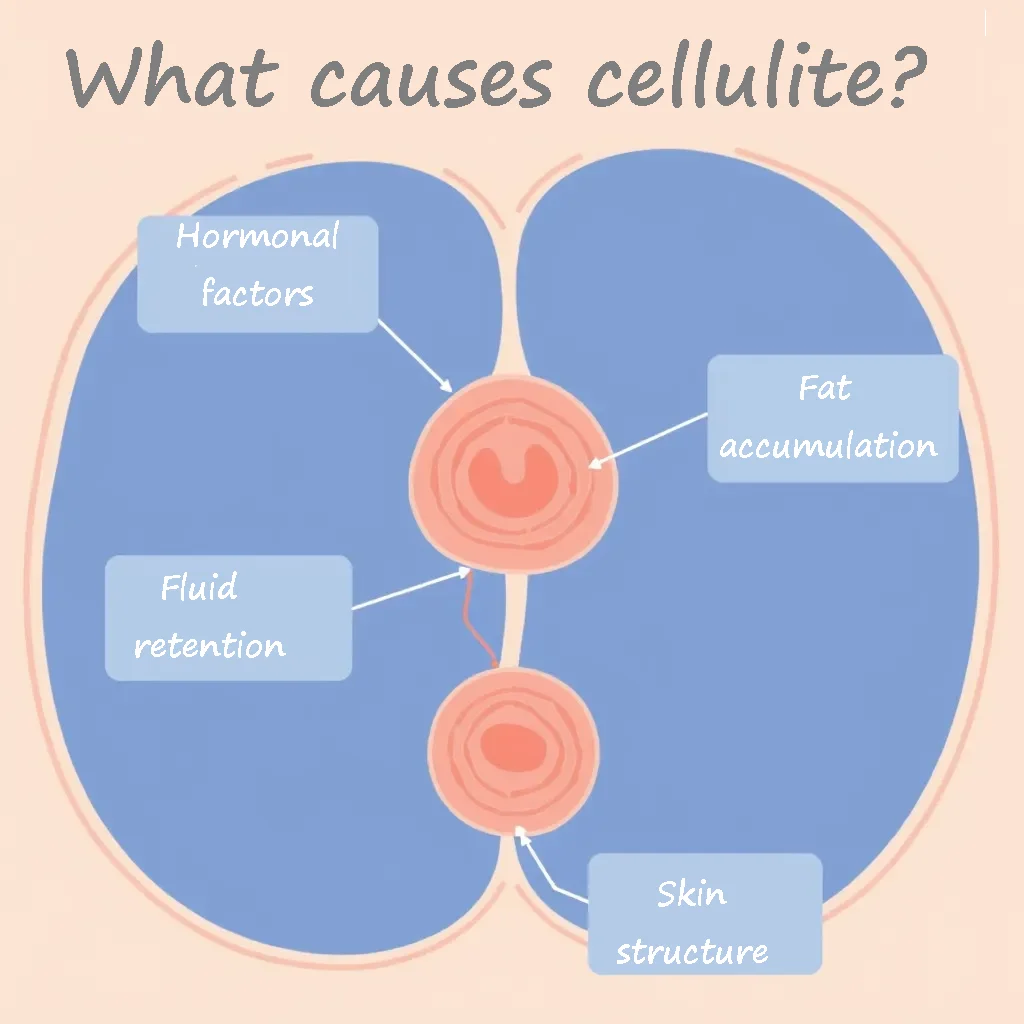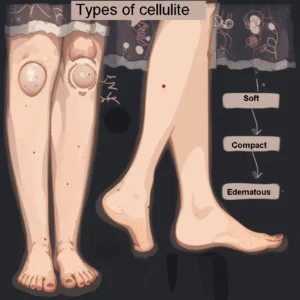

What causes cellulite and why is it so common in women?
What causes cellulite and why is it so common in women?
What causes cellulite is a common question among women of all ages. Although this condition doesn’t pose a health risk, it does cause significant aesthetic concern, especially due to its uneven appearance in areas such as the thighs, buttocks, and abdomen. Even though many people try to combat it with different methods without achieving the expected results, understanding its origins is essential to manage it more effectively.
For this reason, in this article, we will explore its causes in depth, the most relevant risk factors, and also the available solutions that could help you significantly improve its appearance.
1. What exactly is cellulite?

Cellulite occurs when fat accumulates under the skin, creating an “orange peel” texture. This condition primarily affects women due to hormonal factors and differences in skin structure compared to men. There are different degrees of cellulite, from barely noticeable to very pronounced, and its progression depends on factors such as age, lifestyle, and genetics.
2. What causes cellulite: the main factors
Understanding what causes cellulite involves analyzing a variety of factors. In reality, there is no single specific cause; rather, it is a combination of biological, hormonal, and behavioral elements that together contribute to its development.
Main factors influencing its appearance:
- Hormones: Estrogen plays a key role, especially in adult women.
- Genetics: If your close relatives have cellulite, you are likely to develop it too.
- Sedentary lifestyle: Lack of physical activity, in addition to affecting circulation, impairs fat metabolism.
- Unbalanced diet: Excessive consumption of sugars, trans fats, and salt can aggravate fluid retention.
- Dehydration: Not drinking enough water affects the skin’s elasticity and firmness.
- Smoking: Smoking weakens collagen and impairs blood circulation.
- Tight clothing: Frequently wearing tight clothing can impair blood flow and promote the appearance of cellulite.
Even thin people can develop cellulite when these factors combine.
3. How Gender Influences Cellulite: Cellulite in Women vs. Men
Approximately 90% of adult women have some degree of cellulite. This is largely due to the way collagen is distributed in female skin, which makes it easier for fat deposits to protrude. In contrast, in men, the arrangement of collagen fibers is different and considerably denser, making it more difficult for these visible lumps to form.
Additionally, hormonal changes that occur during the menstrual cycle, pregnancy, or even menopause can further aggravate the skin’s appearance. In short, what causes cellulite in women is directly related to their biology and natural hormonal fluctuations.
4. What Causes Cellulite During Aging
The body’s natural aging also plays a significant role. As we age, the skin loses elasticity and tends to become thinner. As a result, subcutaneous fat deposits become more noticeable. Furthermore, collagen production decreases, weakening the skin’s structure, and blood circulation becomes less efficient, facilitating the accumulation of toxins and fluids.
While the aging process cannot be completely halted, there are certain healthy habits that can delay its impact. For example, maintaining a diet rich in antioxidants and ensuring good hydration are key strategies for maintaining healthy skin for longer.
5. Can Cellulite Be Prevented?
Although it’s not always possible to completely prevent cellulite, its effects can be significantly reduced. The key is to adopt a comprehensive approach that includes a balanced diet, physical activity, and a consistent self-care routine. Even when there’s a genetic predisposition, many of the habits we choose every day can make a big difference.
Recommended actions to reduce the risk:
- Maintain a diet rich in fruits, vegetables, and natural fibers.
- Exercise regularly, combining cardiovascular activities with strength training.
- Avoid excess salt, refined sugar, and alcoholic beverages.
- Drink at least two liters of water a day to keep your skin hydrated.
- Avoid wearing extremely tight clothing for long periods of time.
- Massage the affected areas frequently to stimulate circulation.
- Use creams with active ingredients such as caffeine, retinol, or plant extracts.
6. Most Popular Cellulite Treatments
Currently, there are numerous treatments that help improve the appearance of cellulite, although results may vary from person to person. Some procedures are more invasive than others, so it is important to consult a professional before choosing one.
Most Common Treatments:
- Radiofrequency: Stimulates collagen production and improves overall skin texture.
- Mesotherapy: Consists of microinjections with substances that dissolve localized fat deposits.
- Carboxytherapy: Introduces carbon dioxide to increase circulation in affected areas.
- Laser and ultrasound: Break down fat deposits, promoting lymphatic drainage.
- Manual lymphatic drainage: A massage technique that helps reduce fluid retention.
Although these methods can offer visible improvements, it is essential to have realistic expectations, as none of them completely eliminate cellulite.
7. Common myths about what causes cellulite
There are many myths surrounding cellulite that can lead to wrong or even frustrating decisions. That is why debunking these beliefs is essential to making the right decisions.
Common myths:
- “Only overweight people have cellulite”: False. It can affect people of any build.
- “Exercise eliminates it completely”: It helps a lot, but it is not a definitive cure.
Common myths:
- “Only overweight people have cellulite”: False. It can affect people of any build.
- “Exercise eliminates it completely”: It helps a lot, but it is not a definitive cure.
- “Miracle creams work”: There are no magic bullets; a comprehensive approach is needed.
- “Drinking plenty of water is enough”: It’s helpful, but not sufficient as a sole treatment.
Separating facts from myths is key if you want to treat cellulite effectively and consciously.
8. What causes cellulite after pregnancy?
During pregnancy, the female body undergoes numerous hormonal and physical changes. Weight gain, fluid retention, and changes in blood flow are all factors that directly contribute to the appearance of cellulite. Additionally, the skin stretches, which can weaken its structure and leave it more vulnerable to irregularities.
After pregnancy, many women notice that their skin’s texture has changed. Although this is partly completely natural, taking care of your diet, staying hydrated, and gradually resuming physical activity can help significantly improve its appearance. Therefore, understanding what causes cellulite at this specific stage allows you to take informed and more effective action.
9. Is cellulite reversible?
Although cellulite has no definitive cure, its appearance can be greatly improved with consistency and good habits. Changing your diet, staying active, and applying specific skincare can have a very positive impact. Even if it doesn’t disappear completely, you can achieve visibly firmer and healthier skin. The key is to maintain discipline and not get discouraged.
Conclusion
Understanding what causes cellulite is the first step to addressing it with effective and realistic strategies. This common condition is influenced by hormonal, genetic, and lifestyle factors. Although it can’t always be completely avoided, it is possible to improve its appearance through a comprehensive approach that includes diet, exercise, specific treatments, and, above all, consistent self-care. Beyond aesthetics, it is essential to accept your body as it is and make conscious choices that contribute to your overall well-being.
Explore other related articles by clicking here and Visit the official website here




